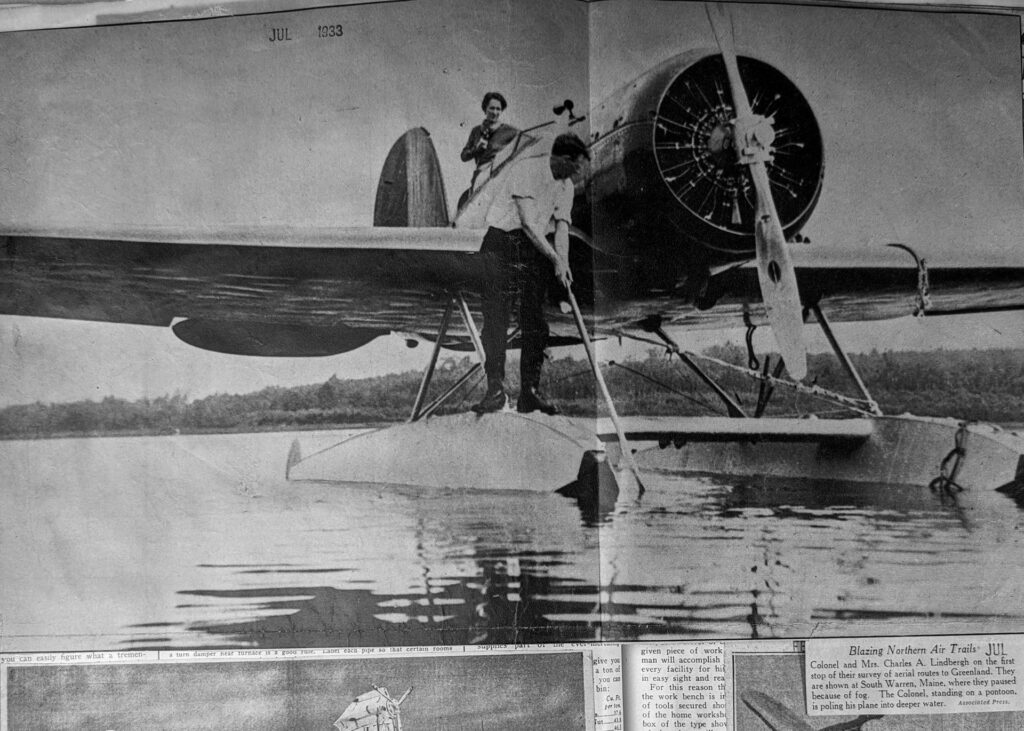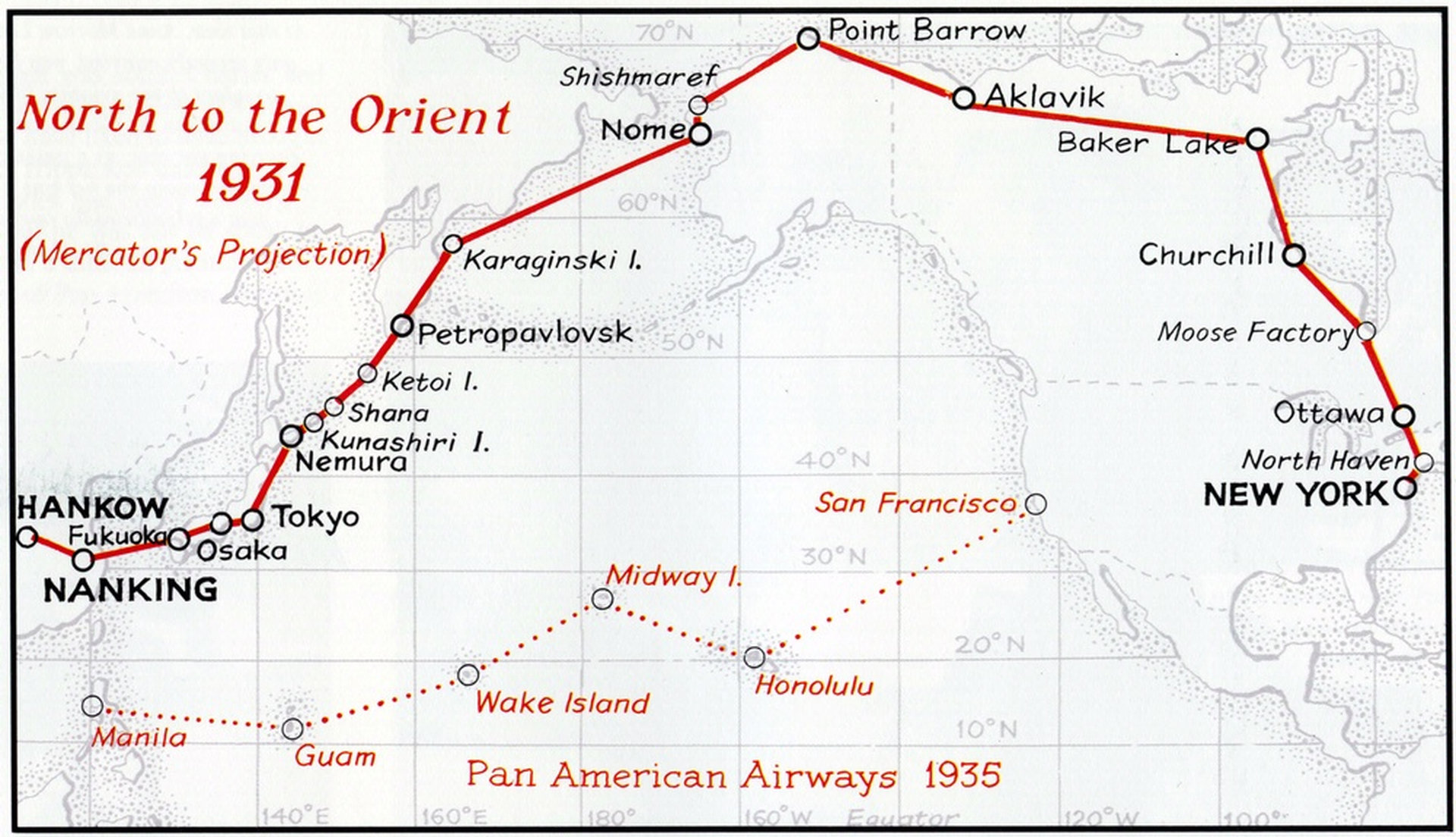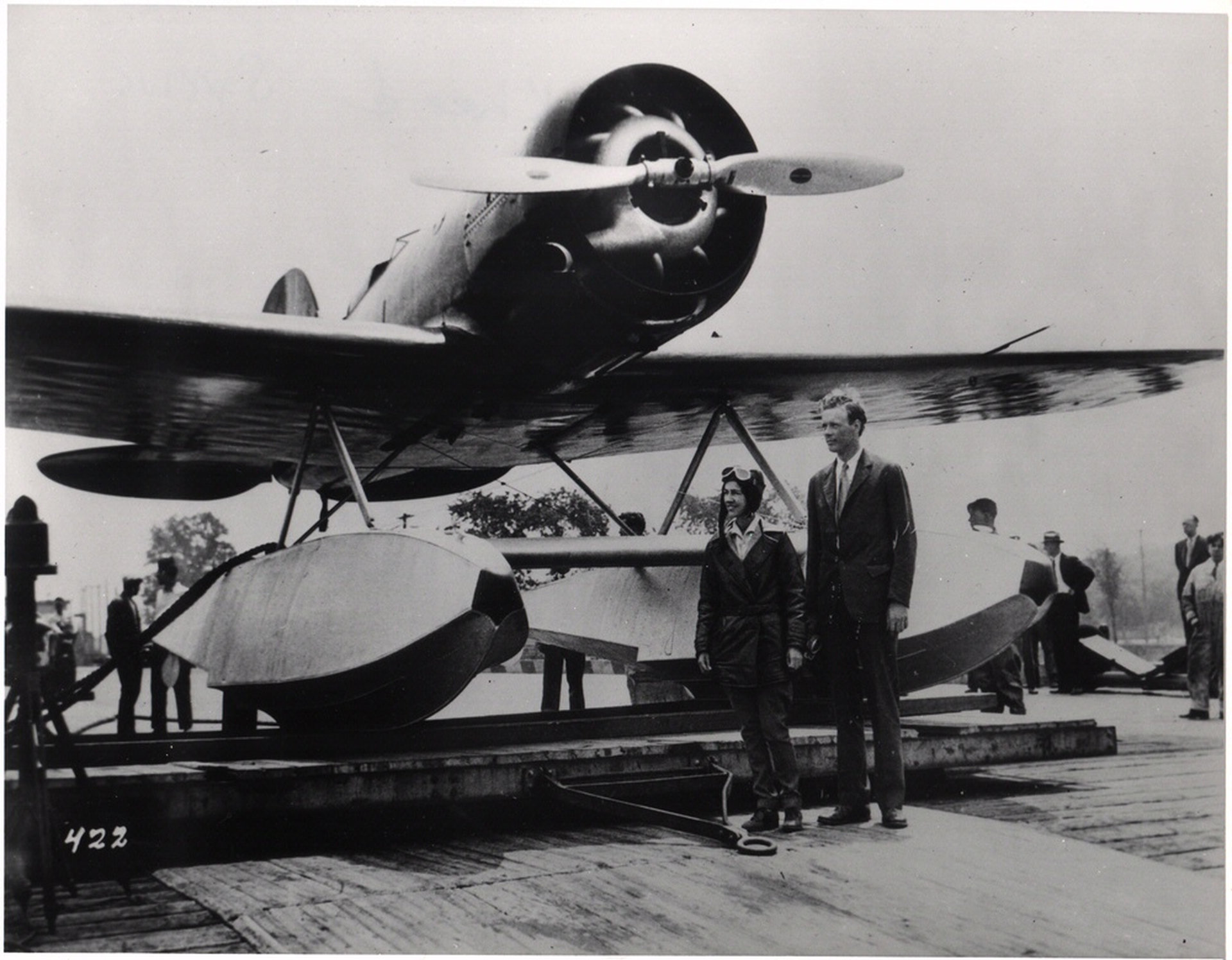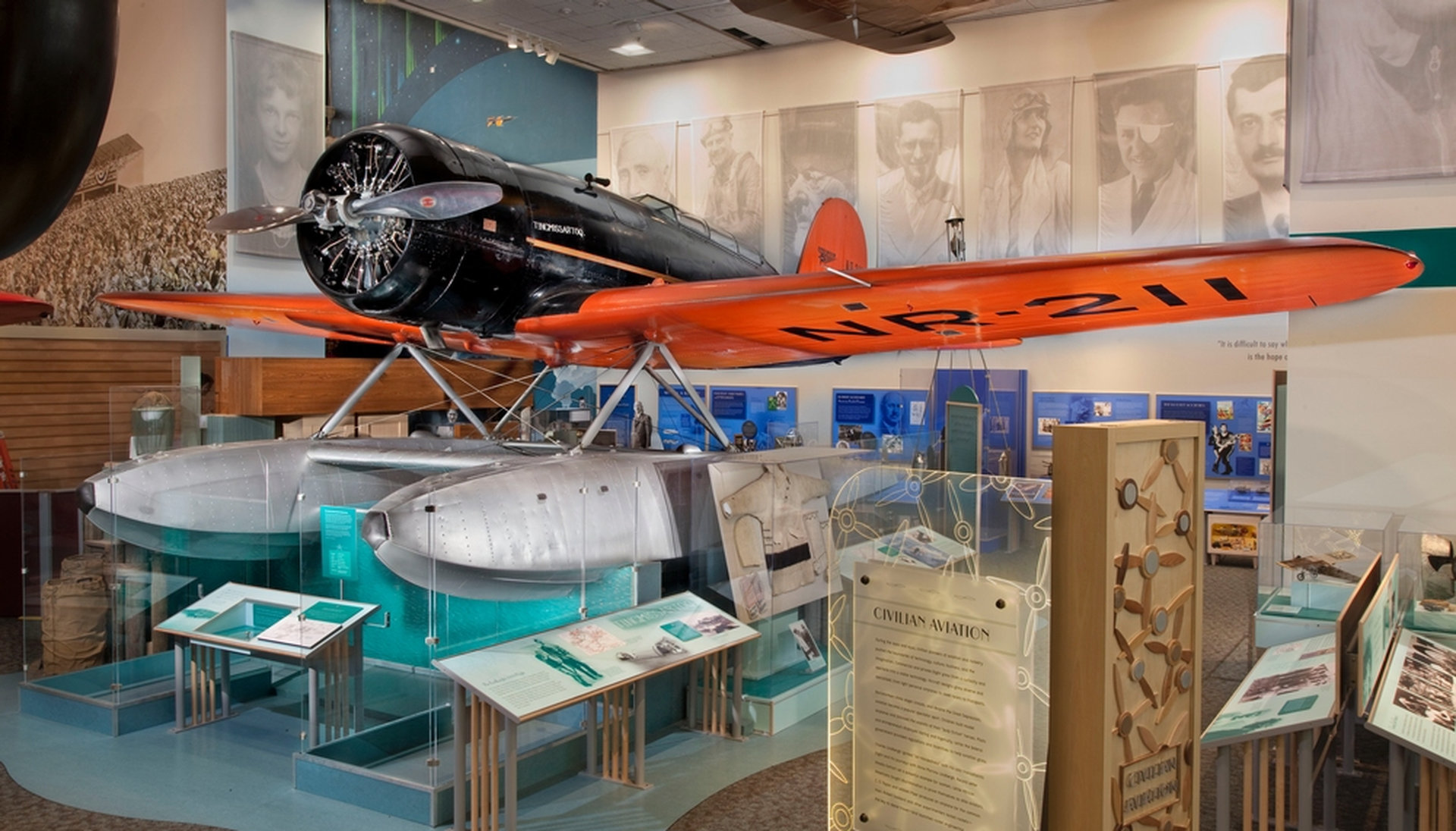Tony’s Scrapbook: Blazing Northern Air Trails

This image appears to be a historical photograph from a newspaper or magazine dated July 1933. It shows an aircraft on pontoons in the water with two people on it.
The caption mentions:
“Blazing Northern Air Trails – Colonel and Mrs. Charles A. Lindbergh on the first stop of their survey of aerial routes to Greenland. They are shown at South Warren, Maine, where they paused because of fog. The Colonel, standing on a pontoon, is poling his plane into deeper water.”
Colonel Charles A. Lindbergh was a famous aviator known for pioneering flights, including the first solo nonstop flight across the Atlantic Ocean in 1927. This photograph documents a later expedition involving him and his wife, surveying routes to Greenland.
Charles A. Lindbergh and his wife, Anne Morrow Lindbergh, embarked on several exploratory flights in the early 1930s to survey potential air routes for commercial aviation. One of their significant endeavors was the survey of aerial routes to Greenland and beyond as part of their broader efforts to establish viable transatlantic air routes.
Purpose of the Survey
- Commercial Aviation: Commercial aviation was burgeoning in the early 1930s. Lindbergh’s surveys, crucial for its expansion, aimed to identify safe and efficient routes for transatlantic flights.
- Air Mail Routes: In addition, there was also a significant interest in establishing reliable air mail routes besides passenger flights, and Lindbergh’s work was instrumental in setting these routes up
Critical Aspects of the Survey
- Exploratory Flights: The Lindberghs conducted a series of exploratory flights, mapping potential routes from North America to Europe via Greenland and Iceland. These flights required careful planning, navigation, and assessments of weather patterns and potential refueling stops.
- Anne Morrow Lindbergh’s Role: Anne was a supportive partner and an active participant. She was the co-pilot and navigator and documented their journeys through detailed logs and writings, which later provided valuable insights into early aviation exploration.
- Challenges: The flights faced numerous challenges, including fog, unpredictable weather, and the need for established airports and refueling stations. The image above shows one instance where they had to pause due to fog in South Warren, Maine.

Impact of the Survey
- Mapping Routes: The data collected during these surveys were vital for mapping safe and efficient transatlantic air routes. This data contributed to establishing regular commercial flights between North America and Europe.
- Advancements in Aviation Technology and Navigation: The surveys highlighted the need for advancements in aviation technology and navigation, prompting improvements in aircraft design, navigation instruments, and meteorological forecasting.
- Public Awareness and Interest: The Lindberghs’ adventures captured the public imagination and interest in aviation. Their efforts were widely covered in the media, helping to promote aviation as a viable and exciting mode of transportation.
Legacy
The Lindberghs’ surveys and exploratory flights, a testament to their courage and determination, laid the groundwork for establishing transatlantic flight routes, which are now routine. Their unwavering spirit and contributions to aviation helped transform air travel from a daring adventure into a regular commercial enterprise, bridging continents and bringing the world closer together.
The photo shows a Lockheed Model 8 Sirius, a single-engine monoplane designed for land and sea operations.

Characteristics of the Lockheed Model 8 Sirius:
- Design: The Sirius was a high-wing monoplane with a sleek, streamlined design. It featured a single radial engine, and the airframe was constructed primarily from wood and metal.
- Floatplane Configuration: The specific configuration in the photo shows the aircraft equipped with floats, making it a floatplane capable of taking off from and landing on water. Floatplanes like the Lockheed used in Lindbergh’s survey missions are excellent for long-range overwater flights.
- Engine: During its production, the aircraft was powered by various radial engines, typically the Pratt & Whitney Wasp series, which provided reliable performance for long-distance flights.
- Historical Use: Charles and Anne Morrow Lindbergh used a modified Sirius named the “Tingmissartoq” (which means “one who flies like a big bird” in Greenlandic) for their exploratory flights. This aircraft was crucial for their surveys of transatlantic air routes, including their notable journey to Greenland.
The Sirius was known for its robustness and reliability, making it a popular choice for aviators undertaking pioneering flights during the early years of aviation exploration. Its combination of performance capabilities and modifications for specific missions, like the floats for water landings, made it an ideal aircraft for the Lindberghs’ ambitious survey flights.
It always astonishes me how one small newspaper photo can enlighten us with much information. And to think, if it weren’t for my father and his impeccable scrapbooking skills, I wouldn’t be sharing this with you today.
As always, I hope you enjoyed this post, and I’ll see you in the next one!
If you enjoyed this article, please consider subscribing with your email address so you can be notified when I post new content. There is no pressure; you know where to go, and I’ll keep creating.
Discover more from Buffalo Air-Park
Subscribe to get the latest posts sent to your email.



